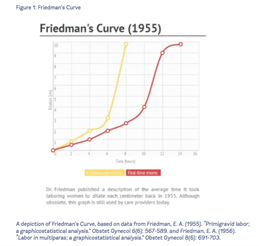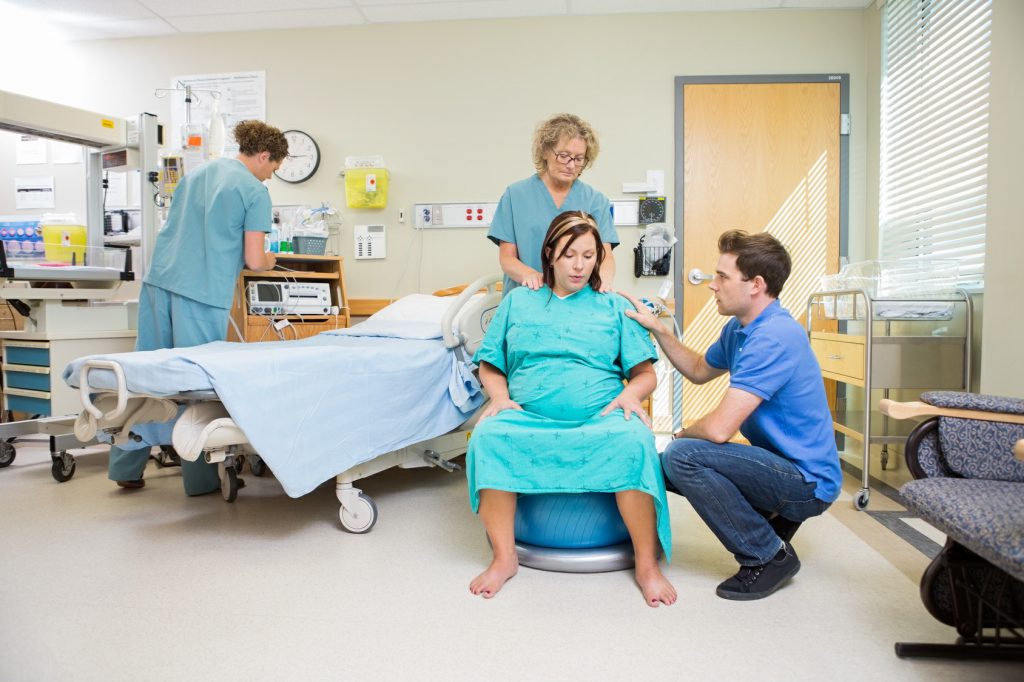‘Failure to progress’ are three words any human would loathe to hear whilst they have been working tirelessly towards something, and yet this phrase has found its way into the birthing suites of many hospitals around the world in an attempt to define, what is actually, a very natural phase of the labour process.
Now considered obsolete (Davis, A, 2003), yet still referred to in the current paradigm of many hospital births, the Friedman curve (1955-1956) identified a relationship between the hours a woman was in labour and the length of cervix dilation. After the 1970’s and some modifications by Phillpot and Castle, with the intention of reducing the incidence of poor outcomes associated with obstructed labour in a remote area of Rhodesia (read Dr Rachel Reed’s The Assessment of Progress for more details), the partogram has been used globally, within hospital systems, to describe a woman’s progression of labour to be ‘normal’ only if progression occurs 1cm or more every hour. This long standing misconception has left little room for many women, who don’t experience such a linear narrative, to birth in their time and on their terms. Leading many women to have undesired interventional births.

With this outdated expectation looming, many formal birth settings take the view that a decline in dilation or a pause all together is an indication of ‘failure to progress’. This notion of failure to progress refers to a failure of the body’s intelligence and capability to birth the baby without the unwanted intervention of others.
The Natural Alignment Plateau (NAP) however, a phrase first coined by birth educator, author, and practitioner of the Bradley Method, Marjie Hathaway, gives name to this very common and natural pause within the birthing process. This natural pause in the dilation of the cervix and contraction of the uterine muscles occurs just before transition (although not always) in preparation for birth of the baby.
To focus all of our attention on the cervix and its dilation is to misconstrue its role in the birth of the baby. The role of the cervix is to keep the baby within the uterus during the gestational period. The cervix, dilates or thins, during labour because the fundus muscles at the top of the uterus are contracting and therefore stretching and pulling the cervix up, creating the opening. Spending time, energy, and unnecessary examination on following the progress of the cervix is an outdated methodology. As Dr Sara Wickham explains, “the cervix has done its job of keeping baby in, now it is the job of the fundus to get the baby out” (2017).
Just as a plateau can occur for men and women during intercourse and sexual response (Britannica, 2014), so it can in the process of labour. Just as we give allowance and purpose to natural pause within the sexual response cycle so too is it important to give purpose and acceptance towards the alignment plateau during labour. As Elizabeth Davis (2018) explains, “I suggest we reframe plateaus as being both physically and psychologically purposeful, rather than worrisome or in need of a remedy.”

So leaving worry, examination, and the immediate desire to medically intervene aside there are a number of things a birthing woman, with the support of her team, can do to utilise the natural alignment plateau and the respite it provides.
Rest and recuperate
After hours of labour, a natural pause in contractions can be a very beneficial moment for a labouring woman to take sleep or at least rest in preparation for the final stages of birth. Leaving every woman alone to rest and relax is a very beneficial way to allow the body to respond and react as it needs to in order to bring the baby down and out.
Review her stress levels and anxiety
In the fight or flight response the body will naturally pause any non-essential functions in order to give all the body’s attention to the perceived risk. If the birthing woman is fearful of the process, overwhelmed and stressed within her surroundings or perhaps hit with anxiety around being a new mother then naturally the body will slow down. By checking in with her and her stress levels, clearing the room, quieting the space, reframing the conversation that is being had (“failure to progress”) a woman’s body can relax and return to regular functioning.
Change positions
The body may stall the process to allow for a change in position to support baby’s progress down the birth canal. By shifting the birthing mother’s position, the baby may find itself in a more suitable position to continue their journey south.
Eat and drink
It is a misconception that birthing women should not eat during labour. This has been established as the norm because hospitals would prefer women to have not eaten in case they are taken into theatre. Eating small nutritious snacks and drinking water (coconut water was a favourite of one of my birthing clients) can offer fuel and energy to the birthing woman in this time of pause and reflect.
Shower or bath
Whether to relieve tension/pain/discomfort or simply to give the birthing woman an opportunity to freshen up, a warm shower or bath can do wonders for a woman’s labouring experience.
Physical touch
Providing massage or acupressure to the birthing woman can provide relief and relaxation during this window of pause and can be really comforting to her if she is feeling overwhelmed or exhausted by the process thus far.
The same can be said for their partner giving them intimate touch and affection. It not only provides support, relaxation and comfort but can also create the release of the hormone oxytocin which naturally supports the labouring process.
Visualisation/ meditation or hypnosis
All three can provide great relaxation and rejuvenation during the natural alignment plateau and can assist with clearing any fear that may be preventing the body from contracting. Hypnobirthing practitioners can provide wonderful techniques to support any labouring woman at any stage of their pregnancy and labour journey.

https://hypnobirthingaustralia.com.au
The Natural alignment plateau is a beautiful opportunity for birthing women to rest, rejuvenate, celebrate and be in the magic of the moment, that is the birth of their baby. It is time to throw ‘failure to progress’ out with the bath water and invite the opportunity to wait for the progress to occur naturally.
My name is Erin Brass and I am a qualified doula who has trained at the Doula Training Academy. If you would like more information about my doula services please contact me:
Email:
[email protected]
Facebook:
https://www.facebook.com/erin.brass
Instagram:
https://www.instagram.com/erinbrass/
References:
Britannica, The Editors of Encyclopaedia. “Sexual response cycle”. Encyclopedia Britannica,
https://www.britannica.com/topic/sexual-response-cycle
Davis A J, The Friedman Curve: An Obsolete Approach to Labor Assessment, Journal Watch, 2003.
https://www.medscape.com/viewarticle/450311
Davis E (2018). Midwifery Today. 127: 14-16.
Labor plateaus and our sexual nature.
Reed R, Dr (2011) The Assessment of Progress
Wickham S, Dr (2017) Passage to Motherhood Conference

